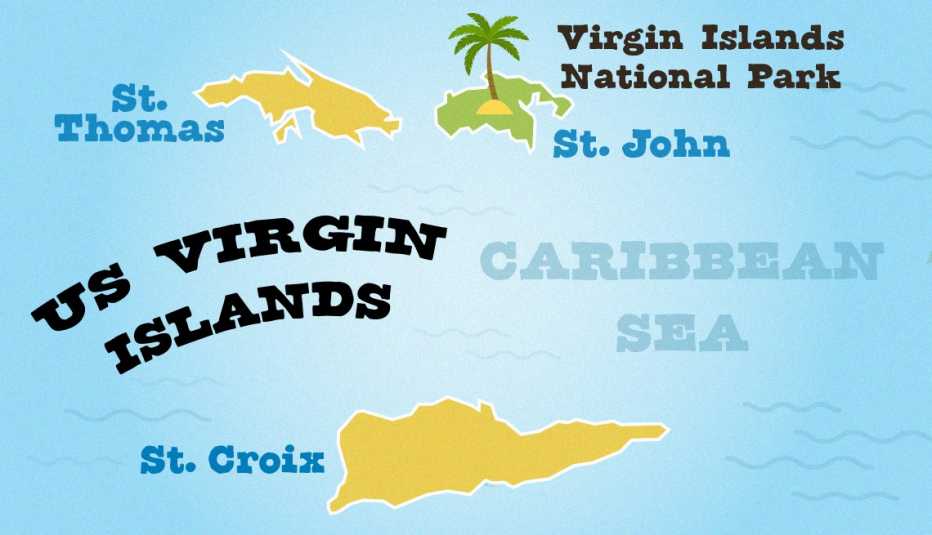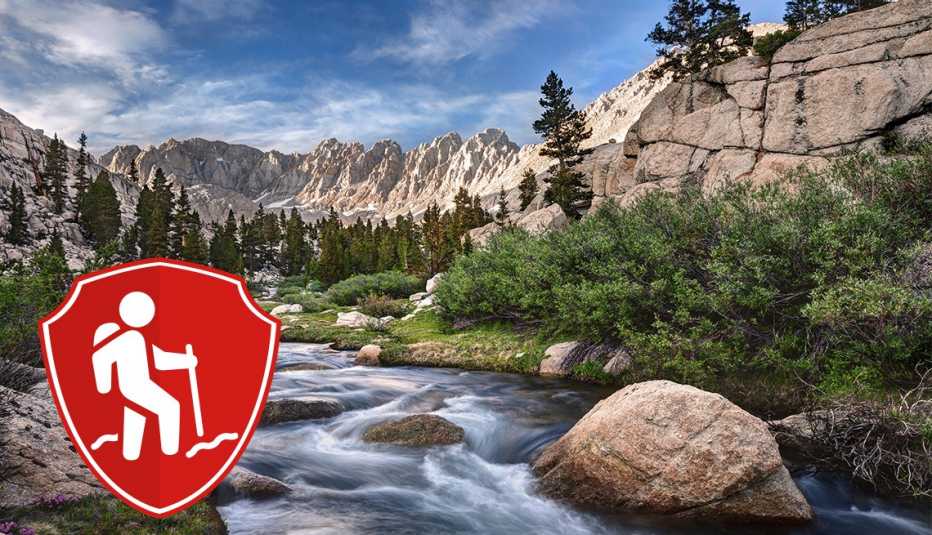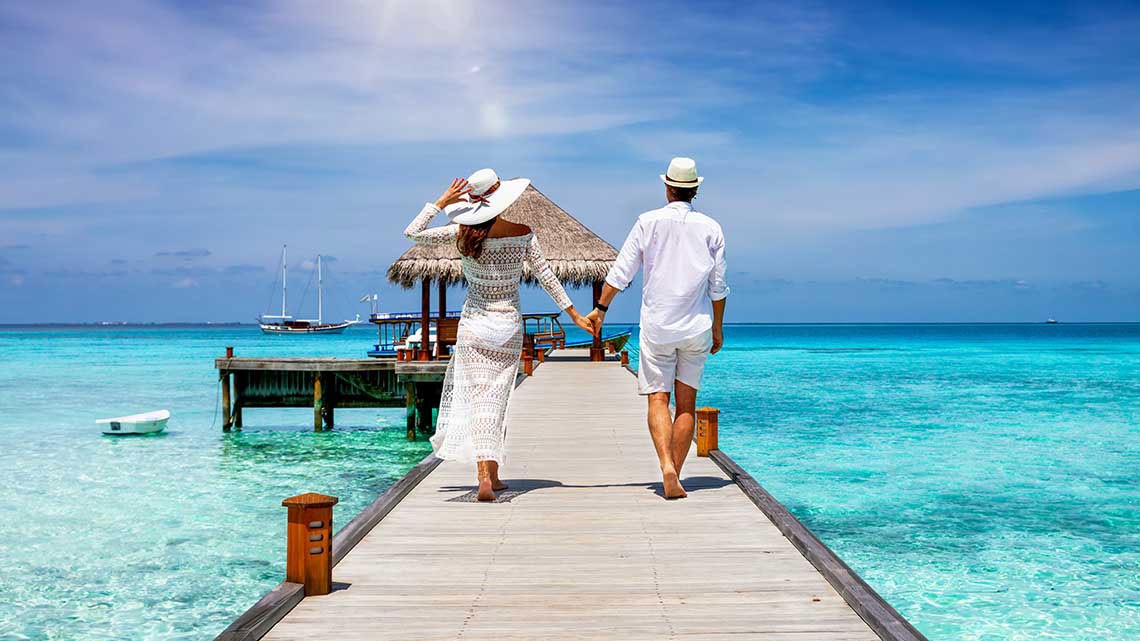Staying Fit
With idyllic, undeveloped white-sand beaches and sea turtles, eagle rays and schools of multicolored fish parading just a short swim from shore, Virgin Islands National Park (VINP) is a paradise on Earth — specifically on St. John in the U.S. Virgin Islands (USVI), territories that also include the larger, more developed islands of St. Thomas and St. Croix. Billionaire Laurance Rockefeller thought this small, 20-square-mile Caribbean isle so beautiful, he bought nearly 60 percent of St. John in 1952, then donated the land to the federal government in 1956 with the stipulation it become a national park for all to enjoy for generations to come.


AARP Membership— $12 for your first year when you sign up for Automatic Renewal
Get instant access to members-only products and hundreds of discounts, a free second membership, and a subscription to AARP the Magazine.
Another big name mesmerized by the island, country music star Kenny Chesney, has owned a home here for years that was destroyed when Hurricane Irma swept across the isle in September 2017. The widespread devastation caused by Irma prompted Chesney to start a foundation that raised funds to help rebuild the isle and park. He has often sung of the joys of St. John beach life: “From this chair I’ve caught a few fish and some rays, and I’ve watched boats sail in and out of Cinnamon Bay ... Been here about a month, not doing much at all, man it’s hard to get bored when you’re having a ball.”


Ways to Save on Expedition Cruises
While these cruises are high on excitement, they can be high on the price meter, too. Make them more budget-friendly with these seven cost-trimming tips.
1. Skip the balcony. You’ll spend very little time in your cabin on this type of cruise, so don’t pay for one with a balcony if you want to economize. “Someone might save 20 percent if they opt for an oceanview cabin instead,” says Linda Speer, master cruise counselor with Cruises by Linda in Harrison, Arkansas.
2. Book very early or book late. You’ll typically find the best pricing for these cruises by either booking far in advance or very close to the cruise date. “So once you identify the cruise lines of interest to you, sign up for their promotions, just in case there are last-minute deals,” Speer says.
3. Take advantage of loyalty programs. If you’re a loyalty member of one of the regular cruise lines now launching expedition ships, Rob Clabbers with Q Cruise + Travel recommends inquiring whether the line will extend your past-guest discounts to its expedition sailings. “Booking your expedition cruise while you’re on one of the line’s regular cruises may result in savings and/or benefits as well,” Clabbers says.
4. Choose your cruise line carefully. “Although Lindblad, Atlas and Viking may be the first lines that come to mind, expand your search to lesser-known companies if budget is a concern — Aurora, Hurtigruten and Quark [for example],” Speer says.
Case in point: Speer compared a Viking sailing to Antarctica in January to a similar one offered by Hurtigruten and found the latter was priced at 40 percent less. “But Hurtigruten sails with many more passengers, and regulations limit the number of passengers on the ice to 100, so there will not be as much time on land,” she notes.
5. Time your trip carefully. Fares vary during the year, so research pricing trends and book when they’re lowest. “Looking ahead to 2023, you can save thousands per person on an Antarctica cruise by booking a March sailing, the month with the lowest fares this year,” advises Colleen McDaniel, editor-in-chief of Cruise Critic, a cruise news and review site. “But do be aware that lower fares generally mean it’s a less popular time to cruise that region, and that could mean it’s not the ideal time to experience it.”
6. Book a non-expedition location. In addition to cruising to such exotic locales as the Arctic and Antarctica, many expedition cruise lines also offer less expensive voyages to destinations that are not as heavy on adventure, such as the Caribbean and New England. “If the ship is your destination, this can be especially appealing,” McDaniel says.
7. Pick an older ship. While the newest ships will have the latest design and shiniest interiors, you can sometimes save $1,000 or more by booking on a vessel that’s a few years older.
St John and VINP aren’t just for sun, sand and rum cocktails, though. “People come here for the beaches and the water, but the island has such a rich history, you’d be missing out if you didn’t tour at least one historical site,” says Jenn Manes, owner of Explore STJ tours, a local company taking visitors on combination beach and culture tours. A surprising number of historic sites are hidden in the park’s jungled, mountainous terrain: from ancient petroglyphs Tainu peoples carved in rocks to ruins of once-mighty sugar plantations, including the recently commemorated “Road to Freedom” trail memorializing the slaves who toiled there.
While the national park and St. John have bounced back well from Hurricane Irma and then Hurricane Maria just two weeks later, recovery efforts are ongoing. The heavily damaged, Rockefeller-founded Caneel Bay Resort within the park still awaits redevelopment, and many trails remain denuded, their large shade trees felled by the hurricanes. But that shouldn’t stop you from visiting: Green once again blankets park hillsides, the waters still shimmer in shades of vivid blue, and the park’s beautiful Cinnamon Bay Beach and Campground has reopened.
VINP can be visited as a day trip from St. Thomas (where plentiful lodging options come cheaper), but to best experience the park plan on spending a few days on St. John to walk the park’s hiking trails, visit its historic sites and, of course, relax on its beaches.
COVID-19-related requirements
Visitors must submit documentation of COVID-19 vaccination through the USVI travel screening portal. If not fully vaccinated or unvaccinated for COVID-19, you will need to to submit proof of a negative COVID-19 test taken no more than five days before arrival. Check the Centers for Disease Control and Prevention and USVI travel websites for updates.
When to go
The best time of year to visit VINP is from March through June, with less rainfall and slightly cooler temperatures (with highs in the mid 80s instead of the 90s) and fewer visitors. The island’s wet season from July to October comes with high humidity and the threat of hurricanes, but barring extreme events, daily rains pass quickly. High season covers November through February, with larger crowds and less availability for lodging and transport.
Getting there and upon arrival
Most visitors to the USVI fly into St. Thomas, about a two-and-a-half-hour flight southeast from Miami. U.S. citizens don’t need a passport for entry, just a driver’s license or other government ID, but having one can help with the entry process. To get from St. Thomas to St. John, take a 20-minute ferry ride from Red Hook Harbor, on the island’s eastern edge, to Cruz Bay on St. John’s western side. Both passenger and car ferries depart frequently.




































































